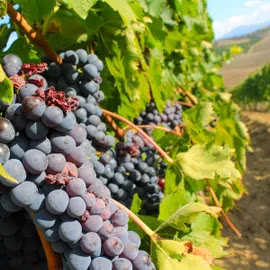“Do you like the wine?” The wait staff asked in anticipation.
I had been having Sauvignon Blanc with dinner at the off-the-beaten-path beach resort in Bintan Island. It was wet and balmy during the monsoon season. Sauvignon Blanc seemed like the best bet with spicy scrumptious Indonesian dishes. The spartan wine menu listed three whites and three reds, just grape varieties. No winery and no vintage were mentioned, making it easy to switch out certain wines. That was what happened.
 |
| Plagã Sauvignon Blanc |
After I told him I actually liked the latest rotation better than the last one, the young man beamed with pride and informed me that the wine was from Plagã, a winery in Bali. An Indonesian wine? Go figure!
Journey of Indonesian Wine
Here’s a little known fact. Indonesian viticulture dates back to the 18th Century in Kupang on Timor island, where locals helped Dutch explorers put down the roots of the first vines. Subsequently, there was an expansion of vineyard areas to Besuki and Banyuwangi in the island of Java. When the Dutch rule in Indonesia ended with World War II and was followed by Indonesian self-rule, the Muslim country imposed strict alcohol controls that set its wine culture back.
In the last couple of decades, however, the Indonesian government has relaxed its controls on alcohol importation and consumption. With an ever rising popularity of Bali as a tourist destination and an increased appetite for fine wines among urban middle-class Indonesians, wine culture is making a swift comeback.
Viticulture in Bali
The arid high-altitude north coast of Bali is rich with volcanic soil making it suitable for growing wine grapes even in a tropical climate. Vineyards that dot Sanggalangit and Seririt villages grow mostly Probolinggo Biru (or Chasselasloulou), Alphonse-Lavalée, and Muscat. More recently, Syrah (or Shiraz), Pinot Gris (or Pinot Grigio), Cabernet Sauvignon, Chardonnay, and even Italian grape, Malvasia Nera, were added to the mix.
 |
| Vineyard in Sanggalangit Village, Bali |
Located just 8 degrees south of the equator with temperature ranging from low 70s to high 80s degrees Fahrenheit, Bali is unconventionally warm for growing vitis vinifera. Vineyards have to experiment with different growing practices to produce viable grapes for winemaking. Also being challenged is the concept of vintage since grapes may be harvested as often as three times a year without the constraints of temperate seasonal changes. As a result, some wineries even stop listing the vintage on the wine label.
Viniculture in Bali
There are about half a dozen wineries in Bali. Some produce wines with grapes from their local estate vineyards while others prefer to source grapes from more conventional wine growing regions. I now have had a taste of a locally grown Indonesian wine and an Indonesian wine that is made from sourced grapes. I can’t say I fully appreciated the former, but I quite enjoy the latter, perhaps because it tastes more familiar.
Founded in 1994,
Hatten Wines is the first winery in Bali and one that grows grapes locally. Led by Australian winemaker James Kalleske, the winery offers a wide portfolio of red, white, rosé, and sparkling wines from its estates. Other Balinese wineries with local estate vineyards are
Sababay Winery that makes both wines and spirits as well as
Cantine Balita that focuses on Italian grapes or Italian-style wines.
 |
| Hatten sparkling white |
Plagã is one of two Balinese wineries that source grapes outside of Indonesia. The winery was launched in April 2013 by
PT Indowines, one of 14 licensed wine importers in Indonesia. Led by Argentinian winemaker Pablo Gonzalez, Plagã wines are made with grapes sourced from Chile, Australia, and parts of Europe. In fact, the Sauvignon Blanc I had was made with 60% Chilean (Central Valley) and 40% Italian (Sicily) grapes. The other Balinese winery
Cape Discovery sources its grapes from Australia, New Zealand, and France.
My Verdict: While unexpected, it was fun to taste wine from a tropical climate. My favoring the Indonesian wine that is made with grapes sourced from conventional wine growing regions is likely a personal bias. It may be worthwhile to revisit both types of Indonesian wines side by side and paired with local cuisines. That’s definitely on the list for my next trip to Bali!






